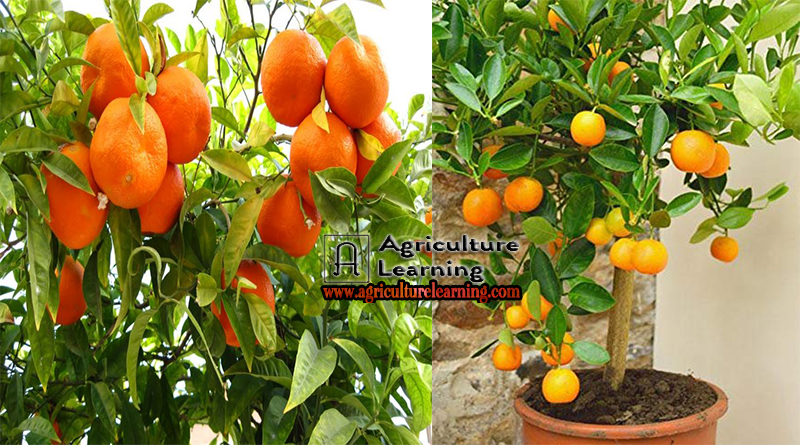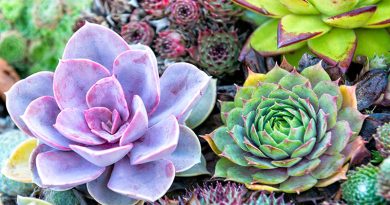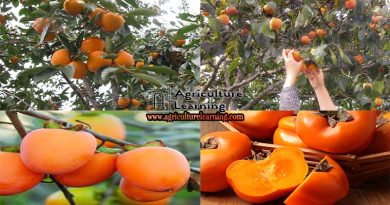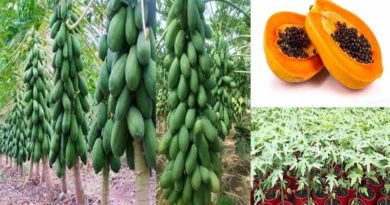Orange cultivation process, variety and it’s health benefits
Orange belongs to the citrus fruit category and is also addressed as sweet orange. It is believed that orange is a hybrid of pomelo and mandarin. Orange trees are greatly found in tropical and subtropical regions of the world and are the most cultivated fruits. This tree is not a wild species; rather it was domesticated by cross breeding two other varieties of citrus fruits. The countries that first started orange cultivation are North Eastern India, China and Indo-China. During the 13th century the fruit travelled to Europe and parts of South America and Central America.
India is the third largest producer of oranges in the world after US, Indonesia and Turkey. The productivity per hectare is very low in India and it ranks 64 in this category by producing only 9.23 tonnes per hectare. India exports more than 25 thousand tonnes to countries like Bangladesh, Kuwait and Oman etc.
Varieties of Oranges: In India there are many varieties of oranges being cultivated on a commercial scale. They are: Khasi Mandarin, Darjeeling Santra, Nagpur Santra, Coorg Mandarin,Kinnow, Coorg Santra, khasi Santra, Darjeeling Mandarin, Sumithra Mandarin and seedless-182 etc.
In Bangladesh, now a days about 400 (for hundred) hectors Agriculture land are used for Orange cultivation. Sylhet, Moulvibazar, Panchagarh and Hill Tracts area of Bangladesh are suitable for Orange Cultivation. There are three type of orange varieties released by Bangladesh Agriculture Research Institute in Bangladesh Such as BARI Orange-1, BARI Orange-2, BARI Orange-3.
Soil and Climate Requirements: Arid and semi-arid regions of the southwest to humid tropical regions of northeast are best suitable for orange cultivation in India. They are best suited for subtropical type of climates where the temperature is around 13-37˚C. High humidity and frost are extremely dangerous for the plants. There could be a possible danger of fruit and flower drop due to hot winds during summer months. Some varieties can be grown at altitudes up to 2000 m above sea level.
The soil that is best suited for orange plants should be light and well drained. Any soil such as sandy loam, alluvial, clay loam, lateritic etc. is favorable for orange plants. The pH of the soil may be around 4 to 9 but ideally deep soil with a pH of 5.5 to 7.5 is beneficial. The soil should not have high calcium carbonate content otherwise the feeder root zone may be badly affected.
Propagation Methods: Propagation is possible through seed buds or grafts. It is believed that vegetative propagation, i.e. by budding or grafting is more preferable for cultivation because seeds take longer time to germinate and produce fruits approximately around 8 to 10 years. While vegetative propagation produces fruits in 3 to 4 years. Generally, a bud with some bark called the budwood is removed from the tree and is inserted under the bark of a host tree. Selection of the budwood must be made from a healthy and vigorous tree during the months of April or November. The length of the budwood should be 8 to 12 inches. The rootstock plant is selected and a one-inch vertical cut is made with a sharp knife. At the bottom of the vertical cut, a horizontal cut is made such that it forms an inverted ‘T’. The budwood is then placed under the flaps of the T cut. The graft is wrapped with tapes and should be removed only after 30 days. If the bud looks healthy and green, then the graft was successful. To help the grafted region grow, 2/3 of the rootstock is cut along with the grafted region and is planted on the ground. When the bud has grown to 2 or 3 inches, the extra rootstock above the bud can be removed.
Land Preparation and Planting: The land for orange farming has to be ploughed thoroughly and properly levelled. Pits of dimensions 1 x 1 x 1 m are dug for planting the seedlings and each pit is filled with a mixture of 15-20 kg of FYM, 500 g of superphosphate and top soil. The best time for planting is from June till August. The normal spacing for planting the trees is 6 x 6 m such that one hectare of land can accommodate 277 plants.
The high-density planting is practiced in hilly regions where planting is done on terraces against the slopes so as to accommodate more plants. These plants or trees are extremely sensitive to water logging and stagnation, so drainage channels of 3 to 4 ft depth along the slopes of the hilly regions are essential. The spacing for high density planting is 1.8 x 1.8 m between the plants such that one hectare of land can accommodate 2990 plants.
Manure and Fertilizer Requirements: Each pit is initially supplied with a half kg of super phosphate. 20 kg of FYM per plant is required during the first year of planting and in the subsequent years the requirement changes to 10 kg, 15 kg and 20 kg respectively. Orange tree requires an annual supplement of 100 g of nitrogen fertilizer in three split doses around the months of April, August and November and 50 g of phosphorous fertilizer in two split doses during August and November. Sometimes when the soil is black clayey, then 25 g of potassium fertilizer may be required for the plant.
The need for micronutrients is high on orange plants otherwise this may lead to disorder in fruits and lower yield. Foliar spraying of the micronutrients is generally practiced in two split doses. The important micronutrients required by the plant are zinc, manganese and iron. Other nutrients like copper, boron and molybdenum may also be required depending on the growth of the plants.
Irrigation Requirements: The minimum water required by the plants is 900 to 1100 mm in a year. This quantity may vary for young plants and mature plants depending on the season. Irrigation is required by the plants at an interval of 10 to 15 days during winter and at an interval of 5 to 7 days during summer. Orange plants have high water requirement when compared to other sub-tropical fruit plants. A mature orange plant on an average needs 60 to 170 liters of water in a day.
Drip irrigation is the most efficient and economical way of water supply to the plants, especially in areas with low rainfall. Care should be taken such that irrigation water doesn’t not contain salts more than 1000 ppm, which may otherwise be injurious.
Pest and Disease Management: Some of the common pests are citrus wooly white fly, scales, thrips, mites, mealy bugs and nematodes. Other than these, there could also be pest like:
Leaf miner – this pest dwells on the surface of the leaves and causes the leaf lamina to weaken. Insecticides can help control the pest.
Citrus psyllid – this pest infests the plants in the colder regions and causes pits in the leaves. The leaves ultimately start yellowing and curling up which makes the plant less productive. Pruning the infested leaves is a good solution to the problem.
Aphids – these pests also cause leaf deformation and stunted growth in twigs and can be controlled by spraying pesticides.
Orange dog – it is a caterpillar which infests the plants at all stages of growth and can be controlled by removing the areas of the plants where they are found or by spraying an insecticide would help control the pest.
The common diseases of orange plants are leaf rot, fruit rot, scab, stem rot, phytophthora and penicillium. They can all be controlled by using a proper fungicide. Keeping the farm clean and using disease free varieties of planting material can be useful.
Harvesting and Yield: Generally orange plants produce three flushes termed as ambia bahar during Dec –Jan, mrig bahar during June- July and hastha bahar during Sept-Oct. The harvest of orange plants is done only after 3 or 4 years from planting and it is estimated that a single tree can produce 40-50 fruits. The productive life span of an orange tree is around 15 to 20 years. The full bearing capacity of the tree is attained only after 10 years. The size and colour of the fruit are the main factors which indicate harvesting time. Normally it is believed that the fruits mature in 240-280 days. Harvesting is done using clippers or shears.
Health Benefits of Orange: – The following are some of the health benefits of oranges.
- Oranges are good source of vitamin ‘C’.
- Oranges reduce the risk of liver cancer.
- Oranges help in relieving constipation.
- Oranges promote healthy body tissues.
- Oranges are good for bone and teeth health.
- Oranges boost immune health.
- Oranges are good for digestion.
- Oranges help in fighting against infections.
- Oranges are good for kidney health.




